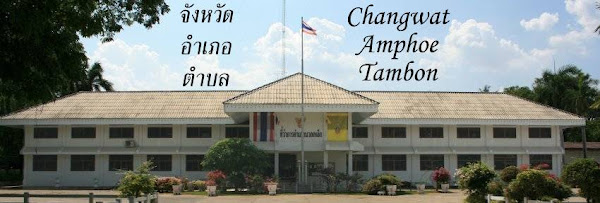 In August 2006 the Thai government suddenly came out with the idea of creating a new province around the popular sea bath Hua Hin, to be created for HM King Bhumiphol's 80th birthday one year later. Also the name of this new province was to be decided by the king himself. Thanks to the online archive of The Nation, the original newspaper article from that time is still available.
In August 2006 the Thai government suddenly came out with the idea of creating a new province around the popular sea bath Hua Hin, to be created for HM King Bhumiphol's 80th birthday one year later. Also the name of this new province was to be decided by the king himself. Thanks to the online archive of The Nation, the original newspaper article from that time is still available.This new province was set to contain (from the north to the south, see the map above) the district Cha-Am from Phetchaburi province, and the three northern districts of Prachuap Khiri Khan province - Hua Hin, Pran Buri and Sam Roi Yot. Especially Hua Hin, but to a lesser degree also Cha-Am (see photo) have huge income from the tourist centers there, so cutting these out of their previous provinces would remove a lot of the income from them. Also, a province with such a lot of income would be popular post for cronies. Other criticism I have heard was this proposal was an attempt of gerrymandering, or to calm down the King's anger on Thaksin's style of government. The related thread in the 2bangkok forum is full of such criticism. One of the few pro's for a new province - the large size of Prachuap Khiri Khan - was alleviated by the fact a branch province hall in the north of the province already exists.
 But as this proposal was made shortly before the coup which ousted Thaksin from office - he just returned from the 17 months of exile now - the new government controlled by the military apparently shelved the proposal, as I haven't heard anything about it anymore since then. But it's of course also possible I just missed the announcement of the scrapping of this plan. Besides - the 80th birthday of the King is over already, so now it would be too late for this birthday gift anyway.
But as this proposal was made shortly before the coup which ousted Thaksin from office - he just returned from the 17 months of exile now - the new government controlled by the military apparently shelved the proposal, as I haven't heard anything about it anymore since then. But it's of course also possible I just missed the announcement of the scrapping of this plan. Besides - the 80th birthday of the King is over already, so now it would be too late for this birthday gift anyway.While the creation of a whole province in honor of the King would have been something new, districts were created in his name before. In 1996, five districts were created on December 5, the birthday of the king, to celebrate the 50th anniversary of his ascension to the throne. All five districts were named Chaloem Phra Kiat (เฉลิมพระเกียรติ), an honorific way of addressing a member of the royal family.


 To give other Wikipedians the chance to use my library, and maybe even get to find a look into book I wasn't able to find, I started to list my most important books on Thai topics on a
To give other Wikipedians the chance to use my library, and maybe even get to find a look into book I wasn't able to find, I started to list my most important books on Thai topics on a 